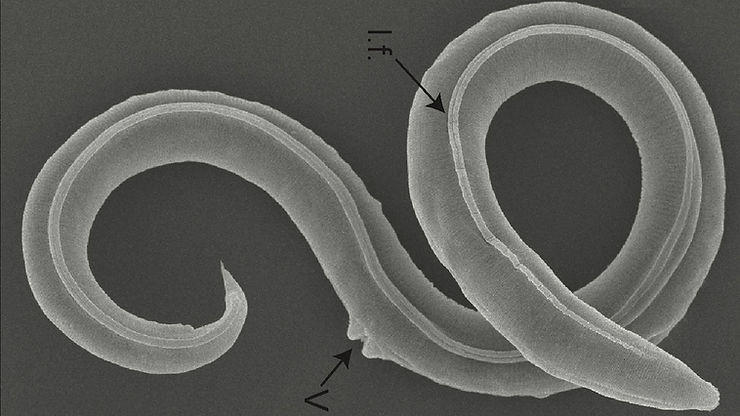By: Sandy Wang
In 2018, two millimeter–long worms wriggled back to life after being thawed from 46,000 years frozen in Siberian permafrost. These tiny creatures showed scientists that life could be paused for very long stretches of time.
The discovery of these worms offered scientists new ideas on how nematodes can survive in such cold environments for so long, in this case tens of thousands of years.
According to a news release from the Max Planck Institute of Molecular Cell Biology and Genetics in Germany, scientists defrosted the worms, which were found 130 feet deep inside the permafrost, by putting them in water.
After the worms were sent to a lab in Germany for further study, they died just days later, but this wasn’t unexpected, as their lifespan is measured in days.
“Sleeping Beauty, when she came out, she didn’t live another 300 years,” said Teymuras Kurzchalia, a researcher involved in the study.
Radiocarbon dating allowed researchers to determine that the worms froze around 46,000 years ago, during the late Pleistocene, or when wooly mammoths were still alive.
Researchers have recently been trying to understand the process of cryptobiosis, a dormant state in which the creature’s body basically shuts down. Cryptobiosis is what allows the miniscule worms to survive the extreme temperatures.
“The major take-home message or summary of this discovery is that it is, in principle, possible to stop life for more or less an indefinite time and then restart it,” Dr. Kurzchalia said.
Scientists discovered specific genes in the two worms that made them capable of cryptobiosis. These were also found in another nematode, called Caenorhabditis elegans. However, the resurrected worms, called Panagrolaimus kolymaensis, were able to stay in this state for longer than any other nematode.
Dr. Kurzchalia mentioned that while there are no clear current practical applications for a deep understanding of cryptobiosis, that should not be a reason to stop the research. He also added that cryptobiosis could, perhaps one day, be engineered by humans.
Dr. Philipp Schiffer, another researcher that participated in the study, said a more relevant application of the findings “is that in times of global warming we can learn a lot about adaptation to extreme environmental conditions from these organisms, informing conservation strategies and protecting ecosystems from collapsing.”
Link to article: https://www.nytimes.com/2023/07/29/science/roundworm-nematodes-siberia-permafrost.html











